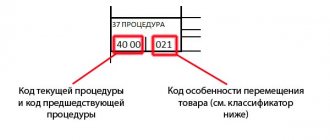Where is the homogeneity of goods taken into account?
Classifying goods as homogeneous (or identical) has meaning and significance when determining the market price for controlled transactions, that is, when both parties are mutually dependent on each other. These include:
- transactions with foreign legal entities or individuals;
- foreign exchange trading;
- transactions with offshore entrepreneurs (companies);
- some transactions between domestic related parties (criteria are given in paragraph 2 of Article 105.14 of the Tax Code of the Russian Federation).
The concept of homogeneity (or identity) is relevant for application in the following areas of business:
- With a contract system: when determining the initial minimum price. Justification – Art. 22 of the Federal Law of April 5, 2013 No. 44-FZ “On the contract system in the field of procurement of goods, works, services to meet state and municipal needs”, Methodological recommendations of the Ministry of Economy and Development of October 2, 2013 No. 567.
- In tax legislation: when determining the tax base for income in controlled transactions. Justification – Art. 1005.9 Tax Code of the Russian Federation.
- In customs legislation: when using the cost determination method. Justification – Decision of the Board of the Eurasian Economic Commission No. 202 of October 30, 2012.
- In Civil legislation: when registering trademarks. Justification - Rospatent order No. 198 dated December 31, 2009.
Responsibility
If the customer does not comply with the rules for determining the identity and homogeneity of GWS, this is the reason for canceling the purchase (Decision of the Novgorod OFAS dated June 19, 2014 in case No. 3426/0, Decision of the Dagestan OFAS dated May 28, 2014 No. 249A-2014, Decision of the Sverdlovsk Regional Court dated March 14. 2017 in case No. 72-272/2017).
In Part 2 of Art. 7.29.3 of the Code of Administrative Offenses is a sanction for failure to comply with the procedure or form of justification of the NMCC. An official will be fined 10,000 rubles for this.
About the author of this article
Dmitry Sidaev Higher and specialized education in procurement: KhSUEP, diploma with honors in the specialty “Jurisprudence” and GAPM named after. N.P. Pastukhova, diploma with honors in the program “Procurement Management”. Author and ideological inspirer of the projects “GoodWin Project: Tenders made simple” and “Antidote 44-FZ: a cure for headaches in procurement.” Trains in procurement under 44-FZ, advises suppliers and customers, works as a guest manager of the tender department. Invited expert in many projects on public procurement.
Other publications by the author
- 2021.12.13EISInstructions for filling out the schedule for 2022
- 2021.12.02 Procurement control The conditions for the admission of foreign goods in government procurement will be changed
- 2021.11.30 Customer documents How to correctly apply Order of the Ministry of Finance No. 126n in procurement
- 2021.11.30 Purchase control Quotas for purchases of domestic goods under 223-FZ: new clarification from the Ministry of Industry and Trade
What goods are called homogeneous
There are no two absolutely identical things in the world. However, in entrepreneurship, goods are produced in classes, groups, batches, etc. To correctly determine the cost, you need to take into account which group a particular product can be classified into. Their individual associations have such similar properties that they can be considered analogous.
Similarity of goods can be expressed in two forms:
- identity – goods produced in the same country, by the same manufacturer with the same basic characteristics (functional, technical, quality and performance), having the same trademark;
- homogeneity - products that have comparable specified characteristics, that is, consisting of similar elements that can perform the same functions and replace each other commercially and from an operational point of view.
To indicate homogeneity, the designations “substitutes” or “analogs” are often used.
REFERENCE! This term and definition of homogeneity were introduced by Federal Law No. 147-FZ of July 31, 1998, which introduced the Tax Code of the Russian Federation. Until the end of 2011, homogeneity applied only to goods. Since January 1, 2012, the concept of homogeneity has been used in paragraph 7 of Art. 38 of the Tax Code of the Russian Federation in relation not only to goods, but also to services and work.
Examples of homogeneous goods:
- mineral waters from various manufacturers;
- children's instant milk porridges;
- diapers with the same performance characteristics;
- medications with the same active ingredient;
- drinks “Coca-Cola” and “Pepsi-Cola”;
- gel and ballpoint pens, etc.
Many argue about the principle of interchangeability as a sign of homogeneous goods, talking about its excessive subjectivity. So, in some cases it is prohibited to use a fountain pen color other than black. Does this mean that blue and black fountain pens cannot be classified as homogeneous goods, since one of them cannot replace the other? No, because we are talking about commercial fungibility. If we use the specific meaning of mutual substitution, it turns out that homogeneous goods cannot exist on the market at all.
Regulatory regulation
Clause 7, Article 38 of the Tax Code of the Russian Federation has been regulating this type of product since January 2012. The very definition of “homogeneous” now applies to works, services and goods, according to the Federal Law of July 18, 2011. Until 2011, since 1999, clause 7 of article 40 of the Tax Code of the Russian Federation was the legislative act defining goods that could be homogeneous.
The Tax Code of the Russian Federation and the Civil Code of the Russian Federation are the two main legislative acts regulating the status of homogeneous goods.
The term itself appeared in 1999, after Federal Law No. 147 came into force.
Determination of the customs value of homogeneous goods
To calculate the amount of customs duties, as well as for statistical accounting of imports, the legislation provides for the determination of the customs value of goods. This value is determined by the person who writes the declaration, but customs officers are required to control its value.
In world practice, 6 methods are used to determine customs value, from which the optimal one is selected depending on the characteristics of the goods and the transaction itself:
- Basic. The customs value of the goods is equal to the cost of the transaction itself plus the costs incurred before reaching the border with the Russian Federation: transportation, insurance, licensing, etc.
- For a transaction involving identical goods. It is used when the main method cannot be applied. Goods to be assessed are compared with already assessed identical ones if:
- they were imported into the territory of Russia at the same time or no later than 3 months ago (compared to the time of assessment);
- both of them are planned to be implemented or used in the Russian Federation;
- the batches of imported goods were approximately the same;
- equal commercial import conditions.
If all conditions, except commercial ones, coincide, it is permissible to make clarifying calculations and confirm their validity with the help of relevant documents. If there were several transactions for identical goods with different prices, then it is allowed to take into account the lowest one, that is, more consistent with the interests of the declarant:
- For a transaction with similar goods. The method is used similarly to the second, but the goods being valued are compared not with identical ones, but with homogeneous ones.
- Subtraction method. The basis is the largest batch of homogeneous (identical) goods sold in Russia recently. Internal costs are subtracted from its cost: transport, local duties, etc. The “cleared” price is considered the customs value.
- Addition method. To the amount of profit for the sale of goods that are homogeneous (identical) with those being valued, the costs of their production, as well as the sale itself, are added.
- Backup method. It is allowed to be used only if all of the 5 previous assessment methods are inapplicable under the current conditions. It consists of examination and determination of value by comparing prices for such goods in the Russian Federation under conditions of competition and during normal sales.
IMPORTANT! First of all, the main method is applied. If this is impossible, each subsequent method is used only if the previous one has proven its failure. It is permissible to interchange methods 3 and 4.
What are homogeneous goods
In the “Dictionary of the Russian Language” by S.I. Ozhegov, a definition is given for the adjective “homogeneous”: belonging to one category. That is, these are those goods, services and works that have a similar composition or are made from the same materials, which allows them to perform the same functions and be interchangeable.
When determining the homogeneity of goods, factors such as:
- quality;
- presence of brand/brand;
- reputation in the market;
- country in which it is manufactured;
- type of service/product;
- its properties and features;
- purpose of operation;
- what it is made of and what technologies were used;
- interchangeability;
- method and ways of sales;
- category of consumers;
- what mode of application - preferential or traditional;
- term of use;
- market price, etc.
Of course, this is not a complete list, but these are the main factors by which a decision is made whether this product or service is homogeneous or not.
This article describes how to draw up a license agreement for the use of a trademark.
When determining the homogeneity of goods that are very popular among consumers, an expanded list of factors is used than in relation to those used for production and technical purposes.
This is due to the fact that the former are more common, which means consumers do not pay such close attention to technical specifications or material. As for the latter, buyers are more picky and attentive to their choice.
This concept is used to determine market prices for controlled transactions. In transactions with homogeneous goods, income for tax purposes is determined by comparing their prices on the market.
For example, shampoos for women of the same brand, nomenclature and manufacturer are identical. But if they are produced by different companies, then these will be homogeneous goods.
What is a commercial designation? This article explains this term in detail.
It must be taken into account that products that are listed in the same class of the International Classification of Technical Regulations may not always be homogeneous with each other. It may contain products of different categories.
Signs: product and service
A manufacturer, in order to individualize the products he produces, can register a trademark in the State Register, that is, his exclusive right to use a unique designation of a product (in everyday life you can find terms of similar meaning: “brand” and “trademark”). The concept of “service mark” is applied to the work performed or the provision of services. They can be:
- verbal or graphic (unique image);
- voluminous or have an original shape (of the product itself or its packaging);
- combine several elements (combined);
- a certain color or sound;
- tactile and others.
How to protect yourself from plagiarism
To protect yourself from dishonest entrepreneurs who want to use your technical specifications, you can rely on clause 6 of Art. 1483 Civil Code of the Russian Federation. This paragraph states that in relation to homogeneous goods, the use of trademarks that are in one way or another similar to trademarks of other organizations is prohibited.
According to clause 3 of Article 1483 of the Civil Code of the Russian Federation, individual entrepreneur or legal entity. a person does not have the right to use someone else’s trademark or designations similar to it. It also states that this rule also applies to homogeneous products if this could lead to their mixing.
This means that at the legislative level the possibility of individualizing such goods from different companies with confusingly identical technical specifications is not allowed.
Their similarity is determined during the examination process, during the procedure for registering trademarks with Rospatent. This is carried out only in relation to exactly this type of product in order to avoid the entry of similar technical specifications into the market.
If the identity of the trademark of homogeneous goods is proven, then the organization that second submitted documents for trademark registration will be refused.
Homogeneous goods are similar in their characteristics, the material used in their production, but belong to different companies. This distinguishes them from identical ones, which are manufactured by the same organizations. Their legal status is enshrined in the Tax Code of the Russian Federation and the Civil Code of the Russian Federation. These are the two main legal documents that determine their position in the market.
Rospatent can determine the homogeneity of certain goods and services. It is this government agency that deals with this issue when registering technical specifications. It is precisely for homogeneous goods that a thorough examination of the brands they use is carried out.
Types of identities
Some researchers divide the entire set of identities into natural ones, which do not require organized participation in their reproduction, and artificial ones, which constantly require organized maintenance. The first include such identities as racial, ethnic, global, territorial (landscape), and species. The second category includes such identities as professional, national, confessional, contractual, (sub)continental, regional, class, estate, group, zodiac, stratification. Some identities are mixed, for example gender.






